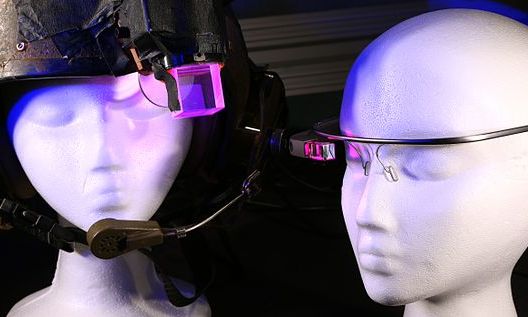6 Reasons Why Google Glass Won’t Be a Commercial Success in 2014
![By Tedeytan (Flickr) [CC-BY-SA-2.0 (http://creativecommons.org/licenses/by-sa/2.0)], via Wikimedia Commons](https://techtheday.com/wp-content/uploads/2014/02/google-glass.jpeg)
By Tedeytan (Flickr) [CC-BY-SA-2.0 (http://creativecommons.org/licenses/by-sa/2.0)], via Wikimedia Commons
Google announced that Google Glass will go on sale in the US next week, April 15, Tuesday. However, this will be a one-day sale affair. Store opens at 9AM EDT and closes 12 hours later. For a price tag of $1,500, the company will be selling the “Explorer” version of the device to interested buyers but with a few conditions. The conditions are that the buyer should be a US resident and should be at least 18 years old.
Google Glass is without a doubt one of the most talked about devices in recent months. Discussions about it have been both in the negative and positive aspects. While Google Glass was met with positive press reactions, many believe that it will fail to become a commercial success. This wearable tech product does not enjoy a good outlook, at for the current year, because of a number of reasons. Some of the most prominent reasons are discussed below.
1. Privacy Stigma
Many view Google Glass as a device that will invade on people’s privacy. In fact, many establishments have already posted signs or warnings about the use of Google Glass within their premises. Even worse, a number of jurisdictions in Europe and the United States have drafted laws regulating the use of Google Glass. Some of these cases have been mentioned in our earlier post on why wearable tech is not as warmly received as mobile computers. Most people are not comfortable with a camera lens aimed at them, especially if the resulting photo is something somebody else would be keeping.
2. Unclear Utility for Average Tech Consumers
What would be your reason in getting a Google Glass? The bragging rights? Maybe this device could be useful for medical or health care practitioners, scientists or researchers who need something convenient to record their activities, those who engage in sports training, or business executives who need to pull out instant data while they are in the middle of discussions or meetings. For the typical tech consumer, the usefulness of Google Glass isn’t that clear yet.
3. High Price
For $1,500, you could already get at least two powerful flagship smartphones. Why would you want to pay that much for a piece of wearable that has no clear purpose? Everyone needs a smartphone for a variety of reasons, from communication to web browsing and entertainment. With Google Glass, the price is just too difficult to justify. In connection to #2, there’s the issue of unclear usefulness so
![By Antonio Zugaldia (http://www.flickr.com/photos/azugaldia/7457645618) [GFDL (http://www.gnu.org/copyleft/fdl.html) or CC-BY-3.0 (http://creativecommons.org/licenses/by/3.0)], via Wikimedia Commons](https://techtheday.com/wp-content/uploads/2014/03/Google-Glass.jpg)
By Antonio Zugaldia (http://www.flickr.com/photos/azugaldia/7457645618) [GFDL (http://www.gnu.org/copyleft/fdl.html) or CC-BY-3.0 (http://creativecommons.org/licenses/by/3.0)], via Wikimedia Commons
4. Poor Battery Life
Samsung was panned for releasing the Galaxy Gear with a battery expected to last for only a day. In the case of Google Glass, the battery is not going to be that desirable – a terrible battery life as some reviewers put it. Clearly, the technology is not yet that mature to be able to come up with something light and comfortably wearable with a long-lasting enough battery.
5. Not Optimized for Facebook
If there’s something tech product users don’t fail to do everyday, it’s to log in to social media, Facebook in particular. Eager Glass wearers are probably excited to “Facebook” with this wearable computer only to be disappointed with the fact that Google created Glass without Facebook as part of the considerations. Yes, this device does a lot of things but there’s one thing it can’t do or at least can’t do intuitively: Facebook. It is one hard-to-ignore disadvantage.
6. Competition from Better Technologies
Google Glass is not the only wearable product that is focused on the yes. An arguably better technology is in the offing: the Lumus Light-guide Optical Element. This Glass-like technology offers a better display resolution and is capable of projecting images or videos on both eyes. Also, it is designed to make images appear at a distance, not close to the eyes, allowing the wearer to interact with the things being shown on the glasses naturally. The Lumus tech is expected to be used by various manufacturers so there will be various implementations of it. Hence, there will be more choice for consumers not just in terms of technical specs but also in design.

By Glogger (Own work) [CC-BY-SA-3.0 (http://creativecommons.org/licenses/by-sa/3.0) or GFDL (http://www.gnu.org/copyleft/fdl.html)], via Wikimedia Commons
Aside from the things mentioned, it is also worth mentioning that developers may not really be that interested in Glass because of the lack of any clear distribution system for apps and Google Glass experiences. However, it will be imprudent to declare Google Glass a doomed product. It’s time may have not come yet; 2014 may not be the right year for this controversial device. Perhaps a couple of years more will eventually make people adopt it as a device to wear and use daily.